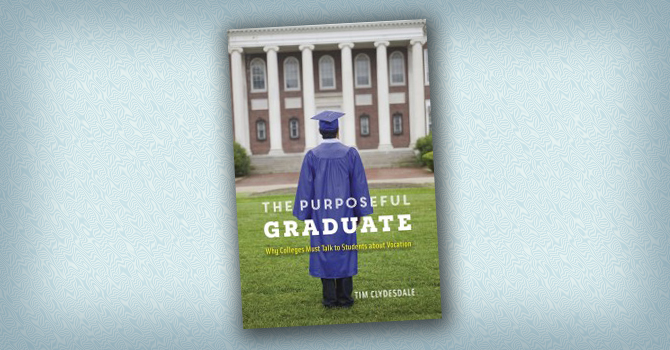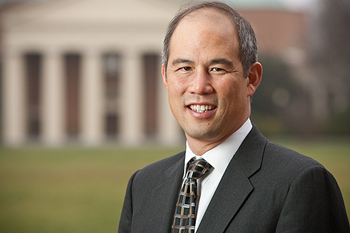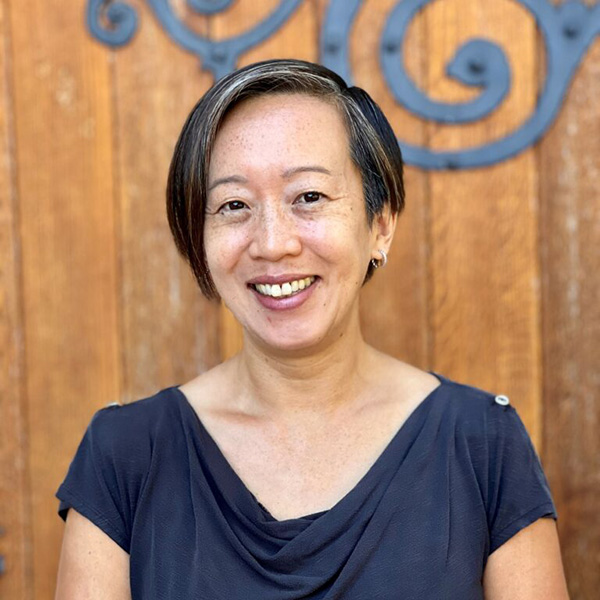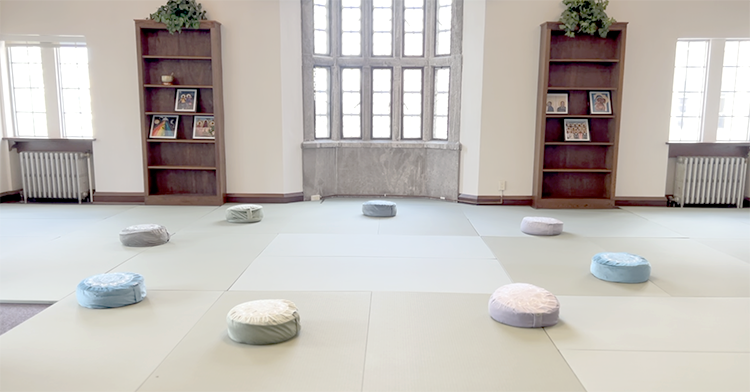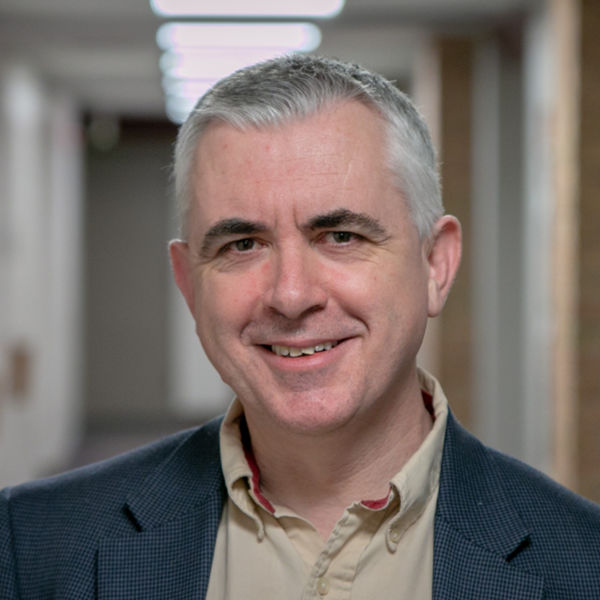In 1999, Lilly Endowment Inc. launched an ambitious project funding programs to engage students in questions of meaning, purpose and vocation at independent colleges and universities across the country.
When sociologist Tim Clydesdale set about to study the results of these programs, he found that they were a resounding success -- so much so that most colleges and universities continued them after the original funding ended.
He found that the students who had engaged the big questions were “grounded idealists” who became “citizen-leaders” after graduation.
“I found that they were more broadly satisfied with their lives. They had more general equanimity about their current circumstances and were more positive in their long-term perspective, and more resilient,” he said. “And that contrasted with the students that I interviewed from places that didn’t have these programs. I was surprised at the level of pessimism I was hearing from these other young adults.”
 In his new book, “The Purposeful Graduate: Why Colleges Must Talk to Students About Vocation,” Clydesdale reports on his findings and explores the many benefits of establishing a structured program to encourage college students -- especially sophomores and juniors -- to think about how to live meaningful, purposeful lives.
In his new book, “The Purposeful Graduate: Why Colleges Must Talk to Students About Vocation,” Clydesdale reports on his findings and explores the many benefits of establishing a structured program to encourage college students -- especially sophomores and juniors -- to think about how to live meaningful, purposeful lives.
Clydesdale and his research team studied 26 of the 88 campuses that received funds from the Lilly project, Programs for the Theological Exploration of Vocation. After visits, meetings and interviews with students both before and after graduation, he concluded that the benefits of such programs were so significant that he would urge even non-religiously affiliated colleges and universities to adopt them.
The programs were intended to help students examine the relationship between their faith and vocational choices; provide opportunities for young people to explore Christian ministry leadership; and enhance the capacity of an institution’s faculty and staff to teach and mentor students in this regard. The objective was to identify and nurture a new generation of talented and committed leaders for religious communities and for society.
In this interview, Clydesdale, a professor at the College of New Jersey and the author of “The First Year Out: Understanding American Teens After High School,” talks about what he found when he analyzed the results of the programs.
Q: What’s the most important take-away from the research that you did? What would you advise someone running a college, based on what you learned?
There are a goodly number of students who are in their sophomore year, and some in their junior year, who open up to the bigger questions of life. They’re willing to engage the bigger questions.
And if you draw those students creatively into a conversation to think about these questions, give them some stimulating resources and give them some conversation partners -- both mentors and peers -- the lasting effects are powerful on those young people.
There’s an immediate effect -- they become much more plugged in to studies, and also to their campus community and the surrounding community.
And they track out of college, and into life thereafter, with a much clearer direction and purpose, which is resilient. It can survive the inevitable bumps and bangs that come in life and still keep them on a path that they find meaningful and fulfilling, and of service to others.
Q: Do you think that this is pertinent only to young adults who are religious, or is it a more general finding?
Oh, I think it is definitely a more general finding. I’d say a good dozen or more of the campuses that received these grants have only a historic affiliation with religion. They very much consider themselves resolutely nonsectarian.
Many of the students that participated in these conversations were coming from a place of faith, some of them from diverse faiths, and some were coming from places of not really being religiously engaged but wanting to ask questions of purpose and meaning and be able to think broadly about them. So they weren’t necessarily religious at all.
Q: Is the goal for the outcome to create a lot of idealistic people who want to change the world?
The interesting thing for me was I thought it was going to create a lot more idealism among people who are already too idealistic.
All of these organizations realize that there are two aspects to thinking about and discerning and reflecting on your purpose. The one is the more reflective piece. And the other is by actual experience and service.
All of these programs combine reflection pieces with service. So what happened was students would be absolutely idealistic, but they’d also spend weeks, months, semesters, years, summers involved in some very real and very hard situations of service.
And so the outcome was what I call in the book a “grounded idealism.”
They very much held on to, “I do want to do something to try to change the world. But I realize how hard that is; I realize how complex some of the problems out there are; I realize what the odds against us are. But nonetheless, I have seen those glimmers of hope that I’m going to continue to pursue despite knowing all the odds.”
And that grounded idealism is what I think made it so useful.
I thought the people who would come into these programs would be really idealistic, and they’d slam into the real world and they’d hit office politics -- trying to make friends and all that sort of stuff -- and they would be really disillusioned.
In fact, I found that they were more broadly satisfied with their lives. They had more general equanimity about their current circumstances and were more positive in their long-term perspective, and more resilient.
Some of them did hit some pretty serious setbacks in the first year, and even after they graduated from university, and managed to overcome those and find a way to move forward.
And that contrasted with the students that I interviewed from places that didn’t have these programs. I was surprised at the level of pessimism I was hearing from these other young adults, and the number of them who were already starting to abandon their dreams and start to settle for things.
It was interesting. It was very, very interesting.
So despite my thought that this was going to lead to a lot of starry-eyed idealists, it left people with a much more resolute, grounded and clear sense of all the challenges they were about to face. They were very clear-eyed and at the same time had an even stronger desire to try to do something important and powerful with their lives for the communities that they served.
Q: The programs were not a single template but were unique to each setting. But did you find commonalities of key factors or best practices as far as how these programs worked?
They were very diverse. But there were some things I began to see. The programs that had the most lasting effect tended to focus on sophomores and juniors. If you focus on first-years and seniors, you don’t tend to get as much traction.
First-year students -- and I wrote about this in my first book -- are basically learning how to be a college student, adjusting to this new role. And deeper sorts of questions in that adjustment for the vast majority of them go into what I call an “identity lockbox.”
They actually will refuse to engage these ideas or bigger questions. They’re too threatening. And so some campuses tried that, and there are always those exceptional students that want to engage the questions from day one, but that’s the thing -- they’re exceptional.
But those schools that waited and began reaching out to them near the end of their freshman year or during their sophomore year got students at that sweet spot in their institutional awareness or institutional relationship. They were settled in and feeling relatively secure, and they were able to do much more.
Sometimes this took the form of retreats that they would do as sophomores. Sometimes this took the form of theme residence halls for sophomores. Those sorts of things were particularly useful.
Sometimes it just took the form of internships or courses.
So that was one of the common factors.
Another, as I’ve said, was service -- getting students out of the campus bubble. It’s very important for that to be combined with reflection.
And then you can’t lastingly influence students without having faculty and staff who are also purposeful.
I use the analogy in the book that these things are like gardens. The faculty are the trees in the garden. Trees are real important in that garden, because they help lay out the overall landscape. They provide a lot of shade, and they just set the overall lay of the land. And they’re also the only thing in the landscape that can stop bulldozers.
Bulldozers are administrators. The president can change and say, “I don’t know why we’re doing this anymore. We’re going to cut the funding for that.”
And staff can be gone and programs can disappear, but faculty that have infused this idea into their courses, into their mentoring conversations -- they’re there for the long term. I mean, they’re there for the rest of their careers, and this work embeds itself very deeply then, when that happens.
So that’s another best practice: to ultimately get your faculty on board with what’s going on.
Q: And what changes, if any, were there to the institutions in which these programs resided?
I’m not going to make the claim that all the institutions were profoundly changed by this, although I did hear on many campuses that this had changed the conversation or the culture of the college. And that would be coming from faculty, not just students.
Competitive economic pressure on private institutions means that they need to be very clear about what’s the value-added that they offer compared with the state college down the road that’s charging one-third the price.
And so what they began to realize is, “Well, one of the things we offer is that we are a religiously affiliated institution. We have broader conversations here, and we have space and resources for those broader conversations, including theological conversations that absolutely the state college down the road doesn’t have.”
And I think that effect, combined with the resources of the grant, began to show up even in some of these campuses’ mission statements. We began to see words like “purpose” or “vocation” or “calling,” particularly in those institutions whose affiliations were stronger.
Q: Why is this important?
Right now, there’s an extraordinary amount of pressure on higher education -- and on parents, and on students heading into higher education -- that this is all about job training. And I don’t want to pooh-pooh the importance of that question. That’s a very important question.
But college -- we call it higher education. It’s designed to do something a little bit different. It’s designed to step back and ask broader and deeper questions. It’s designed to form what I call “citizen-leaders” for communities across the United States and around the globe.
And citizen-leaders are not something that just roll out of a set of 30 courses in sequence so that at the end of the conveyor belt, boom! -- there they are. It’s not just about content mastery.
Citizen-leaders need to be engaged in a more thoughtful way about what is it that matters to them. To create citizen-leaders, you need to engage people on this question.
A lot of people in higher education are feeling beleaguered. They’re feeling under attack. And I think that at times like this, we need to get back to the basics. But this is one of the basics we have lost any idea of how to do -- those sets of big questions that used to animate higher education.
And we banished one of the most important factors that influence how people answer the big questions -- religion and theology -- from the conversation. So it’s like we handicapped ourselves in higher education, making it impossible for us to have a good conversation.
Q: Do you think it really was done differently or better in the past?
I think there was once a point -- mostly prior to World War II, although some of the liberal arts colleges probably still kept this going for some time after World War II -- where a liberal arts education was about something a bit broader. It was about what was a well-lived life.
But I think what happened in the 1960s, with the questioning of authority and campuses saying, “We’re not going to be in loco parentis,” is that the baby got tossed out with the bath water.
These institutions absolutely needed to open their doors to a far more diverse population than the white upper-class males that they had previously taught. But when most of higher education just abandoned these larger questions of ethics, of how to live, of meaning and purpose, I think something was harmed in our higher education.
And it took a while for us to notice, because we had a roaring economy going for a while, so college looked like it was working fine. People were leaving, they were getting jobs, they were prospering, but I think we were missing something. Now that’s shown up a lot more clearly in these years of global capitalism, when a college degree does not immediately guarantee a secure, stable job.
And it starts to show some of its other weaknesses at the same time, too.
Q: What happens next with the vocations program?
The grants started running out around 2008, and since then the Council of Independent Colleges has launched the Network for Vocation in Undergraduate Education, with funding from Lilly Endowment Inc.
To join this network, campuses have to pay dues. There are now 191 colleges and universities that have joined. So in the time since the money ran out, we’ve more than doubled the number of campuses engaging this work, and people are now paying money for the opportunity to learn how to do this well.
So it’s becoming something of a movement. I think that it speaks to the usefulness of this, and the desire in higher education to start having some more meaningful and helpful conversations on campuses.

